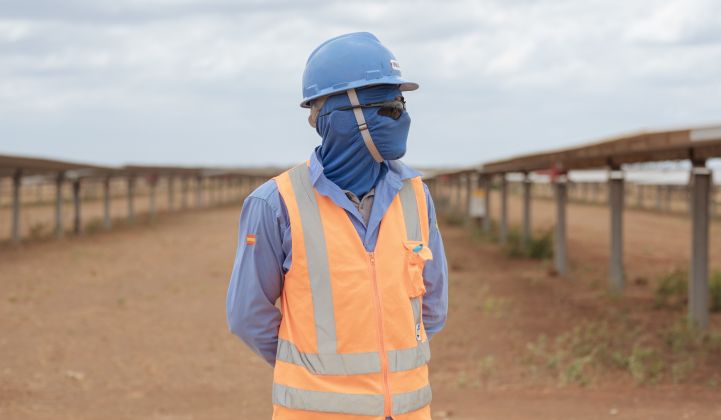It might be obvious to anyone in the renewable energy business, but a growing body of data collected by Fitch Ratings backs it up: Solar projects are a safer bet than wind farms when it comes to kicking out the expected amount of power.
Many wind farms significantly underperform expectations, according to a recent Fitch analysis. On the other hand, solar arrays are proving so reliable over time that developers are finding themselves able to secure financing on more favorable terms — an important long-term tailwind for the market.
Remarkably, the biggest threat to the credit ratings of some California solar projects these days is not the plants themselves but rather questions around the future viability of their utility offtakers.
"Rock-solid" solar performance
When renewable developers approach banks for project finance, they are often asked to provide what are called "P50 probabilities," which estimate how much power will be generated on an annual basis.
Taking a range of factors into account, from long-term weather assessments to how similar equipment has performed in the past, a P50 forecast puts a number on how much a project is expected to generate in a given year; half the time it should crank out more power than its P50 forecast and half the time less.
It turns out that many wind farms are generating less electricity than expected, and in some cases significantly less, Fitch said in a recent research note. That’s happening despite ongoing advancements in wind turbine technology and improvements in resource analysis.
Looking at a group of around 70 renewable energy projects globally, Fitch found that 86 percent of the time solar projects performed right around their P50 forecast — or better. Only 7 percent of the time did solar plants perform “significantly” (more than 10 percent) below their P50.
Solar plants, by and large, have demonstrated a “really rock-solid performance,” said Andrew Joynt, a senior director at Fitch Ratings focused on project finance. There are important implications for developers, with the market growing comfortable with “slightly more aggressive financing terms for solar projects,” Joynt told GTM.
“A solar developer trying to finance the development of a project can go out and borrow more money than it otherwise would have and doesn’t have to put quite as much equity into the project as it otherwise would have,” Joynt said.
Wind, on the other hand…
Compared to solar’s stability, wind “does not measure up,” Fitch said in its research note. Nearly 90 percent of the time, the wind farms Fitch looked at failed to reach their P50 forecast. And more than half the time they fell “significantly” below their P50.
Of the 70 global renewable projects Fitch looked at, two-thirds are wind farms (almost all onshore), and the bulk are in North America or Latin America.
A range of factors could contribute to wind’s underperformance, starting with the obvious fact that the wind is inherently less predictable than the sun, making estimates more difficult. For the purposes of project finance, such estimates are typically provided by independent consultants. Fitch did not look at whether assessments have improved over time.
“What we’ve certainly seen is that when projects have resource forecasts based on actual operations…they’re much better than ones done prior to completion,” Joynt said.
Despite wind’s shortcomings, most wind farms have held up in terms of their overall credit quality.
“What we’ve found is that even though wind projects have largely underperformed expectations, the way the financings are structured, there’s enough cushion there; there’s enough resilience built into these financing structures that we haven’t had a wide swath of downgrades or projects actually defaulting,” Joynt said.
Similarly, solar projects are not necessarily seeing their credit ratings upgraded. While the industry’s growing track record of reliability might yield higher ratings on projects at a given amount of leverage, developers are in many cases simply adding more leverage.
Their thinking, Joynt said, is: “I still get that low investment-grade rating, and I actually just get to borrow more — and that increases the equity returns.”
Utility PPAs not what they used to be
Having a huge American utility as an offtaker is typically a good thing for a renewable project’s credit rating. But that’s no longer a given in California, where PG&E is struggling to climb out of bankruptcy and the state's other two big utilities face challenging questions about their own futures.
Some U.S. solar projects now carry a credit rating equivalent to that of their utility offtakers, Joynt said. "That's pretty remarkable."
“It’s basically saying that the operating risk itself is not viewed as something that constrains the project; it’s really just how likely you are to get paid by the utility.”
“That wasn’t really seen as a very big risk until these wildfire liabilities popped up," Joynt said. “Obviously, the biggest issue is with PG&E, but even [Southern California Edison and San Diego Gas & Electric] have had their issues and had some erosion of credit quality.”




